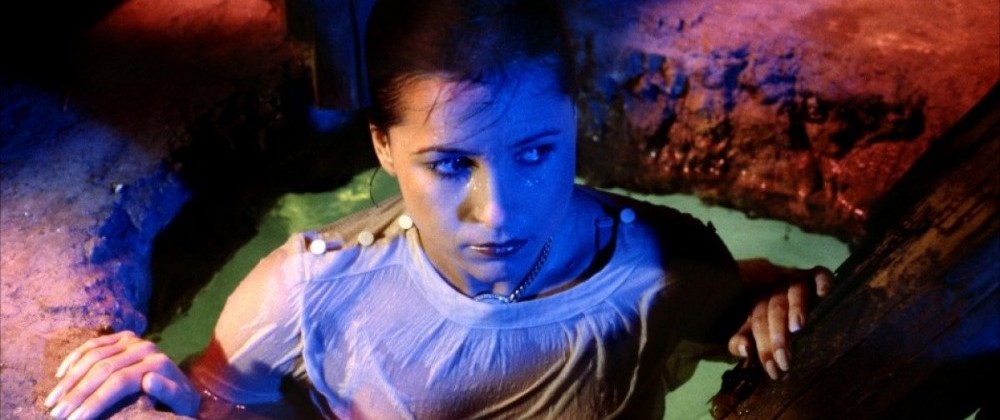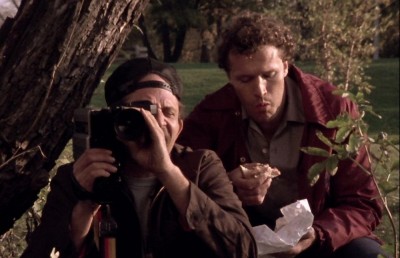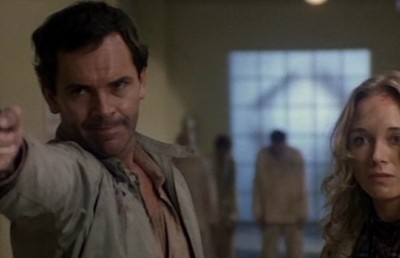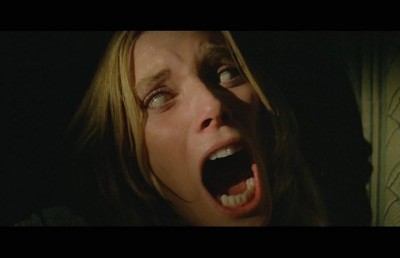What Makes The Blood Drip So Well?
The Italian Horror Film

With a healthy majority of Fant-Asia’s International section devoted to Italian horror I thought it would be appropriate to get things rolling with some thoughts on Italian style horror. Since the late 1950’s, with Riccardo Freda and Mario Bava leading the way, Italy has produced some of cinema’s most excessively stylized and passionate horror films and cycles: from the giallo thriller, to the Mondo film, to the Third World Cannibal epic, to the Devil Possession film, to the gut-wrenching Zombie film. The Italian horror industry (a cottage industry at best) has continually struggled against cultural stigmatisation, financial constraints, industry apathy and the overbearing presence of American cinema. Because of this latter fact, the Italian film industry developed a parasitic relationship to American cinema. Sometimes out of financial necessity and sometimes out of creative laziness, Italian cinema became, notably in the 1980’s, extremely derivative of popular American cinema. But the Italian’s, with their spirit of reconciliation, managed to turn a negative into a positive, making an art out of it. And as in any art that is carried across cultures, a transmogrification occurred (look what the Japanese have done to baseball, or gameshows!).
Legions of fans have waxed euphorically over the Italian horror film, and although a lot has been written about them, much of it has been purely descriptive or anecdotal (though that is beginning to change with recent publications such as Broken Mirrors/Broken Minds by Maitland McDonagh, Immoral Tales by Cathal Tohill and Pete Tombs, the fairly recent horror fanzine explosion, and scattered journal articles). If I’m allowed a slight theoretical interlude, I’d like to discuss one aspect of the earlier noted “transmogrification” that makes the Italian horror film so special, and that will hopefully help viewers to better appreciate the sanguinary delights of Italian horror.
In an essay on film comedy entitled “Pie and Chase: Gag, Spectacle and Narrative in Slapstick Comedy,” in Classical Hollywood Comedy author Donald Crafton argues that with classic slapstick comedy, gags (those little bits of funny “business”) often function as intrusions into the narrative flow. The comedian in question begins to riff on a particular gag to the point where it no longer serves the narrative, but instead becomes its own spectacle. Nearly all genres have similar disruptive junctures, narrative “detours” if you will, which are accepted as self-serving conventions. For example, in the musical, especially those where music and story are disassociated (the pre-integrated musical), the narrative is halted by elaborately choreographed song and dance numbers. In the American action genre it’s the car chases; in the crime or western genre it’s the shoot-out; in the Asian martial art film it’s the fight sequences. In the horror genre it’s scenes that build toward anticipated danger and, in some cases, the resulting acts of murder. In each noted case the narrative stands still and gives way to “spectacle.” The more excessive the genre, the greater the number of narrative detours. Hence in a traditional slasher film, as in the Friday the 13th series, there is more spectacle than narrative.
The same can be said about the Italian horror film, but more accurately, it is the set piece that detours the narrative, and far more than is the case in the traditional horror film. A set piece is an elaborately choreographed sequence that usually (though not exclusively) takes place in one location. In the Italian horror film set pieces involve one to three characters and (usually) features violence, gore and death. Fulci, Argento, Bava, and Lenzi all, to varying degrees and styles, practise the art of the set piece. This will become apparent if you see enough of the films at Fant-Asia.
Lucio Fulci, second only to Argento and Bava as master of the set piece, has a classic example in The Beyond (playing the 27th at 21h50). A man lies unconscious on the floor from a fall off a ladder. Tarantula’s appear and slowly begin to crawl all over the man’s body. The narrative halts for nearly four minutes as Fulci treats us to gruesome extreme close-up’s of the tarantula’s biting into the man’s eye, nose, lip and mouth. In a later film, Aenigma (1987), Fulci recreates this set piece in a three minute sequence with snails replacing tarantulas. In Mario Bava’s Baron Blood (1972) a shadowy killer stalks Elke Sommer in a three minute sequence through surreally back-lit, mist-strewn streets and alleyways (such moments of protracted set piece stalks abound in Bava — and Argento’s — oeuvre). The Argento diptych of Suspiria (1977) and Inferno (1980) are full of stunning set pieces. One of the most impressive of any Italian horror film is the early cellar set piece from Inferno, in which a woman delves into an inexplicable puddle below the cellar floor in search of her keys. The breathtaking sequence lasts four and-a-half minutes but doesn’t advance the narrative one bit (Mario Bava worked with Argento on this set piece). An even more bizarre and narratively disconnected seven minute set piece occurs later in the film. A crippled, cat-hating antique dealer stuffs a canvas bag full of stray cats and takes them down to a sewer drain spillage area to drown. Once there he slips and falls into the rat-strewn waters. Rats begin to attack. His calls for help seems to be answered by a nearby cook, who runs to his apparent rescue, only to shockingly attack the helpless victim with a knife!
When mainstream critics complain about “weak” narratives in Italian horror they are missing the point. In the great Italian horror film, narrative is merely a pretext for spectacle. The Italian set piece serves the same function as the showdown in a Sergio Leone spaghetti western: pure spectacle over narrative development. Kim Newman, in his book Nightmare Movies , states of Argento, “Previously, the murders in Argento’s films (particularly the first death in Suspiria) have been set pieces; Inferno is all set pieces, and thus all of a piece.” To catch the best examples of Italian set piece artistry at Fant-Asia I urge you to go see The Beyond, Stagefright, Dark Waters, The Stendhal Syndrome and Zombie.














